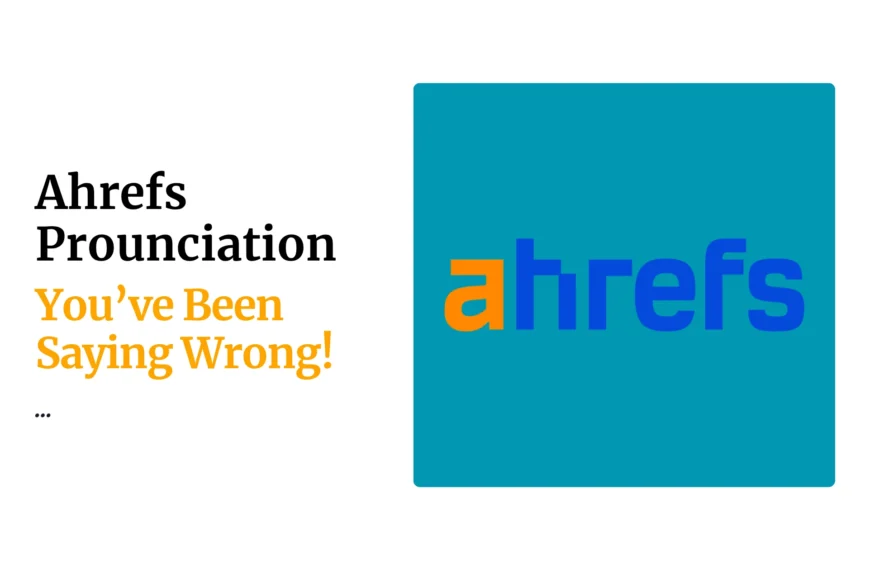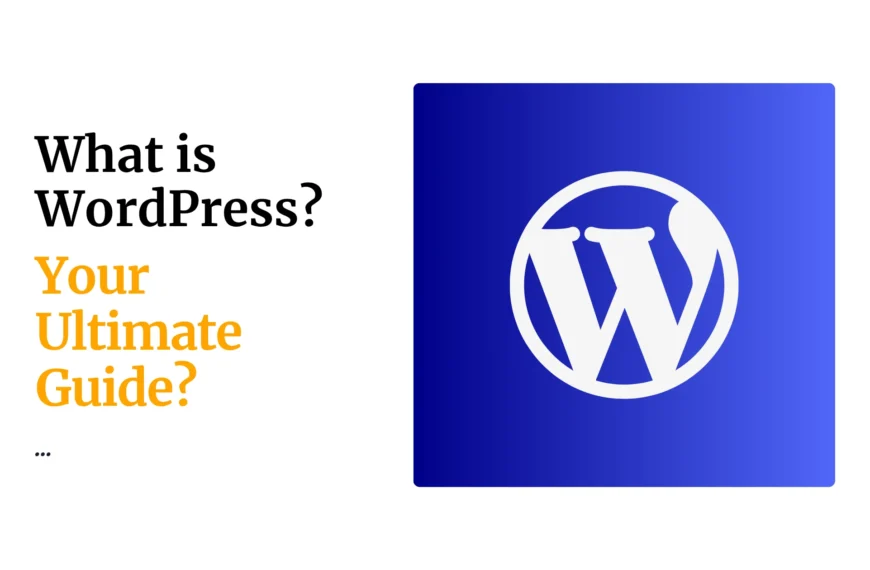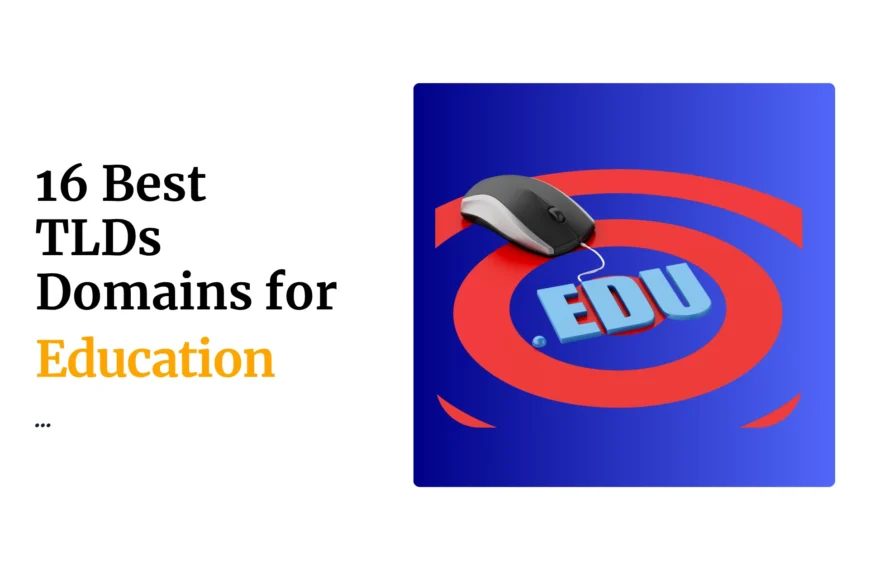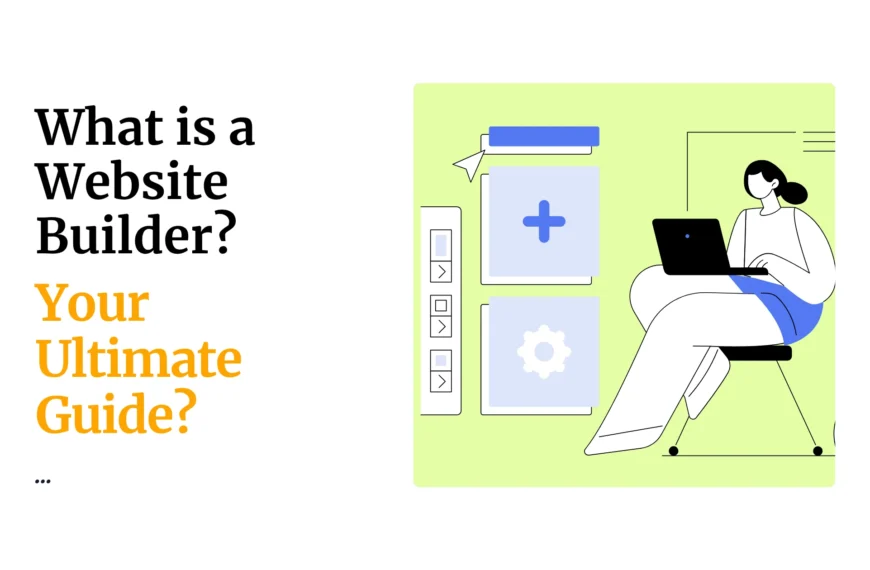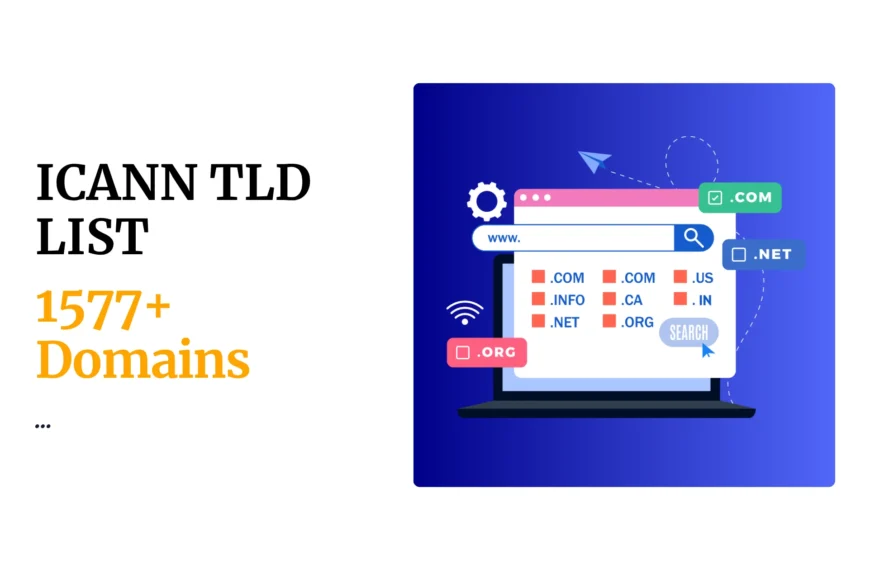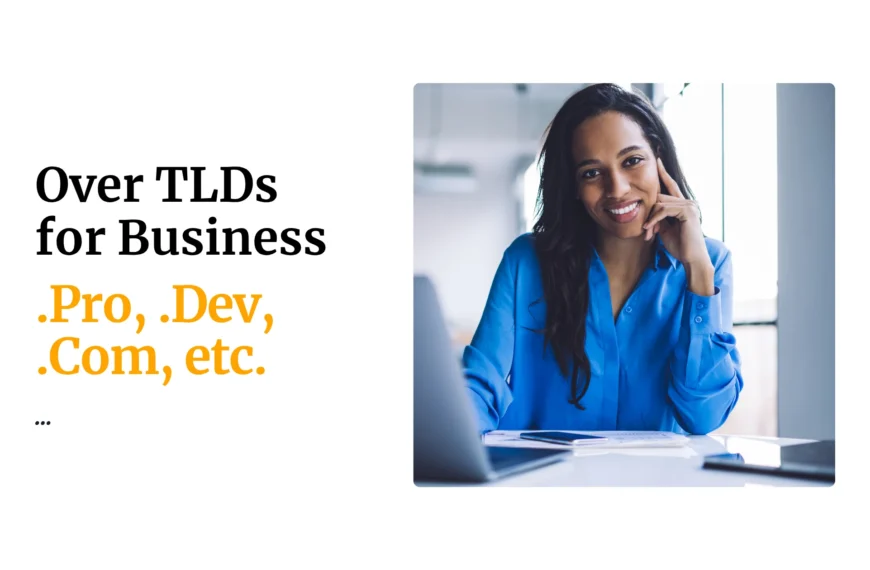In today’s digital landscape, website security is paramount. With cyber threats lurking around every corner, safeguarding your website and protecting sensitive data has never been more critical. Fortunately, you don’t need to be a cybersecurity expert to enhance your website’s defenses. In this article, we’ll give you a comprehensive guide to website security so you can keep those pesky hackers at bay.
1. Update, Update, Update!
Regularly updating your website’s software, including the content management system (CMS), plugins, and themes, is crucial for maintaining security. These updates often include security patches that address vulnerabilities found in previous versions. By keeping everything up to date, you close potential entry points for cybercriminals.
To ensure you stay on top of updates and maintain a secure website, follow these additional tips:
a) CMS Updates
Content management systems (CMS) like WordPress, Joomla, or Drupal release regular updates to enhance functionality and security. Check for updates within your CMS dashboard or subscribe to notifications for new releases. Regularly updating your CMS ensures you have the latest security patches installed.
b) Plugin and Theme Updates
Plugins and themes expand the functionality and design options of your website. However, outdated or vulnerable plugins and themes can be exploited by hackers. Only use reputable plugins and themes from trusted sources, as they are more likely to release frequent updates. Update your plugins and themes as soon as new versions are available, as updates often address security vulnerabilities.
c) Update Frequency
Aim to update your website’s software at least once a month or whenever critical security updates are released. Set reminders or create a schedule to ensure you don’t miss important updates. Regular updates mitigate the risk of known vulnerabilities being exploited by cybercriminals.
d) Testing and Compatibility
Before updating, create a backup of your website to avoid any potential compatibility issues. Some updates may conflict with your website’s existing plugins or themes. Test updates on a staging environment or consult the plugin/theme developers’ documentation for compatibility information. This way, you can address any issues before applying updates to your live website.
e) Automatic Updates
Take advantage of automatic update features available in some CMSs, plugins, and themes. This ensures that critical security patches are applied promptly without manual intervention. However, exercise caution with automatic updates and ensure they won’t conflict with your website’s functionality. Regularly monitor automatic updates to verify their successful execution.
By diligently updating your website’s software, you demonstrate a commitment to maintaining security and staying ahead of cyber threats. Regular updates minimize the risk of known vulnerabilities being exploited, keeping your website and its sensitive data safe from unauthorized access.
2. Crank up the Password Power
Weak passwords are an open invitation for hackers. Encourage users to create unique, complex passwords comprising a combination of letters, numbers, and special characters. Implement multi-factor authentication (MFA) for an extra layer of defense.
a) Password Complexity
Educate your users on the importance of strong passwords. Encourage them to create passwords that are at least eight characters long and include a mix of uppercase and lowercase letters, numbers, and special characters. Discourage common passwords or easily guessable patterns like “123456” or “password.”
b) Password Managers
Recommend the use of password management tools like LastPass or Dashlane. These tools securely store and generate complex passwords, alleviating the burden of remembering multiple passwords for different accounts. Password managers can also detect and alert users to potentially compromised passwords.
c) Multi-Factor Authentication (MFA)
Enable MFA for user logins whenever possible. MFA requires users to provide additional authentication factors, such as a unique code sent to their mobile device, in addition to their passwords. This adds an extra layer of security by ensuring that even if passwords are compromised, unauthorized access is still prevented.
d) Regular Password Updates
Encourage users to update their passwords periodically, such as every three to six months. This practice helps mitigate the risk of long-term exposure to potential password breaches. Consider implementing a password expiration policy that prompts users to change their passwords at regular intervals.
e) Education and Awareness
Provide clear guidelines on password security through user education materials, blog posts, or email newsletters. Explain the risks of weak passwords and the importance of creating unique and strong passwords. Offer tips and best practices for password creation and management.
By emphasizing the importance of strong passwords and implementing additional authentication measures, you significantly reduce the risk of unauthorized access to your website and sensitive data.
3. Lock It Down with SSL/TLS Encryption
Installing an SSL certificate on your website enables SSL/TLS encryption, converting your site from HTTP to HTTPS. This encryption creates a secure communication channel between visitors and your server, protecting sensitive information from interception by cybercriminals. HTTPS also provides a ranking boost in search engine results, enhancing your website’s visibility. SSL Certificate installation is one of the most important tips in this comprehensive guide to website security.
a) SSL Certificate Installation
Obtain an SSL certificate from a trusted certificate authority (CA). Many hosting providers offer SSL certificates as part of their services. Install the certificate on your server or use tools provided by your hosting provider to simplify the installation process.
b) HTTPS Implementation
Update your website’s URLs from HTTP to HTTPS. This ensures that all data transmitted between your server and visitors’ browsers is encrypted. Update internal links, including images, scripts, and other resources, to avoid “mixed content” warnings.
c) Trust Indicators
Once HTTPS is implemented, trust indicators, such as a padlock icon in the browser’s address bar or a green address bar, will signal to visitors that your website is secure. These indicators build trust and reassure users that their data is protected.
d) SSL Certificate Renewal
SSL certificates have an expiration date, usually ranging from three months to several years. Set up a reminder system to renew your certificate before it expires. Failure to renew the certificate may result in a security warning for visitors and a loss of trust in your website.
e) SEO Benefits
Google considers HTTPS as a ranking signal, favoring secure websites in search results. By implementing SSL/TLS encryption, you improve your website’s chances of ranking higher and attracting more organic traffic. Ensure your URLs are properly redirected from HTTP to HTTPS to avoid any negative impact on SEO rankings.
f) Mixed Content Issues
After migrating to HTTPS, ensure all content on your website, including images, scripts, and external resources, is served securely. Mixed content warnings can occur if some elements are still loaded over HTTP, potentially impacting the overall security of your website. Use tools like SSL/TLS scanners or browser developer tools to identify and fix mixed content issues.
By implementing SSL/TLS encryption, you establish a secure connection between your website and its visitors. This protects sensitive information, enhances trust, and positively impacts your website’s SEO performance.
4. Back It Up, Back It Up!
Regularly backing up your website files and databases is crucial for quick recovery in case of a security breach or data loss. A comprehensive backup strategy ensures that you have a safety net to fall back on. Consider the following details and tips for effective website backups:
a) Backup Frequency
Set up a regular backup schedule based on the frequency of updates and changes to your website. For dynamic websites with frequent content updates, daily backups are recommended. For static websites, weekly or bi-weekly backups may suffice. Find a balance that suits your website’s needs and resources.
b) Full Site Backup
Perform full backups of your entire website, including files, databases, media uploads, and configuration settings. This comprehensive backup approach ensures that all essential components are preserved and can be restored in their entirety.
c) Automated Backup Solutions
Utilize automated backup solutions and plugins to simplify the backup process. There are numerous backup plugins available for popular CMS platforms like WordPress, which offer scheduled backups and options to store backups locally or in the cloud.
d) Off-Site Storage
Store your backups in secure off-site locations or utilize cloud storage services. Storing backups on a separate server or cloud platform reduces the risk of losing data in case of server failure, physical damage, or security breaches.
e) Incremental Backups
Consider implementing incremental backups, which only capture changes made since the last backup. This approach reduces backup size and speeds up the restoration process. Many backup solutions support incremental backups, saving both storage space and backup duration.
f) Backup Testing and Restoration
Regularly test your backups to ensure their integrity and effectiveness. Perform trial restorations on a test environment to verify that backups can be successfully restored. Regular testing helps identify any issues with the backup process and enables you to address them proactively.
g) Retention Period
Determine the desired retention period for your backups. Retain backups for a sufficient duration to cover any delays in detecting and addressing security breaches. Consider industry-specific compliance requirements when establishing your backup retention policy.
h) Document Backup Procedures
Document your backup procedures, including the backup schedule, storage locations, restoration process, and responsible personnel. This documentation helps ensure consistency and enables smooth backup management, even when team members change.
By implementing a robust backup strategy, you safeguard your website against potential security breaches, data loss, or accidental modifications. Regular backups give you peace of mind, knowing that you can quickly restore your website to a previous state in case of any adverse events.
5. Use the Power of a Web Application Firewall
Implementing a Web Application Firewall (WAF) acts as a powerful shield against common web-based attacks, such as SQL injection and cross-site scripting. By filtering incoming traffic, a WAF identifies and blocks malicious actors before they can exploit vulnerabilities in your website. Consider the following tips when utilizing a WAF:
a) Choose a WAF Solution
Research and select a reliable WAF solution that suits your website’s needs. There are both cloud-based and on-premises WAF options available. Evaluate factors such as ease of implementation, compatibility with your existing infrastructure, and the reputation of the WAF provider.
b) WAF Configuration
Properly configure your WAF to align with your website’s specific requirements. This may involve setting up rules to block known attack patterns, customizing security settings, and fine-tuning the level of protection. Consult the documentation and support resources provided by your WAF solution to maximize its effectiveness.
c) Regular Updates and Patching
Keep your WAF up to date by applying regular updates and patches. WAF vendors often release updates that address new threats and vulnerabilities. Staying current ensures that your WAF is equipped to handle the latest attack techniques and offers optimal protection.
d) Monitoring and Incident Response
Continuously monitor your WAF logs and security alerts to identify any suspicious activity or potential attacks. Establish an incident response plan to address any security incidents swiftly. Regularly review and analyze WAF logs to gain insights into emerging attack trends and adjust your security strategy accordingly.
e) Collaborate with Security Experts
If you lack in-house expertise, consider partnering with security professionals who specialize in WAF implementation and management. Their expertise and experience can help ensure that your WAF is properly configured, monitored, and updated to provide optimal protection.
By implementing a Web Application Firewall, you add an essential layer of defense to your website. It acts as a proactive shield against common web-based attacks, significantly reducing the risk of unauthorized access, data breaches, and damage to your website’s reputation.
6. User Permissions: Handle with Care
Granting excessive user permissions can lead to disaster. Properly managing user roles and permissions is crucial to minimizing the risk of unauthorized modifications or misuse of administrative controls. Consider the following tips when handling user permissions:
a) Role-Based Access Control (RBAC)
Implement RBAC to assign specific roles to users based on their responsibilities and the level of access they require. Define roles such as administrators, editors, contributors, and subscribers, each with its own set of permissions. This approach ensures that users only have access to the functionalities necessary for their tasks.
b) Principle of Least Privilege (PoLP)
Adhere to the PoLP when assigning user permissions. Only grant users the minimum level of access required to perform their job functions effectively. Avoid assigning overly broad permissions that could potentially expose sensitive data or critical system settings.
c) Regular User Access Reviews
Conduct periodic reviews of user access rights to ensure that permissions remain appropriate and up to date. Remove access for users who no longer require it due to changes in roles or responsibilities. Regular reviews help maintain a secure environment by eliminating unnecessary access points.
d) Two-Factor Authentication (2FA) for Administrators
Implement 2FA for administrative accounts to provide an extra layer of protection. This authentication method requires users to provide a second factor, such as a unique code sent to their mobile device, in addition to their regular login credentials. 2FA strengthens the security of administrative accounts, reducing the risk of unauthorized access. Check these common types of 2FA.
e) User Training and Awareness
Educate users about the importance of responsible account management and the potential risks associated with improper handling of user permissions. Provide training on how to assign and manage permissions correctly and emphasize the significance of safeguarding sensitive information.
f) Auditing and Monitoring
Implement auditing and monitoring mechanisms to track user activities and detect any suspicious behavior or unauthorized access attempts. Regularly review logs and investigate any anomalies or security incidents promptly. This proactive approach helps identify and mitigate security risks associated with user permissions.
By managing user permissions, you reduce the risk of unauthorized modifications, data breaches, and internal security incidents. Implementing role-based access control, adhering to the principle of least privilege, and conducting regular access reviews are essential steps to maintaining a secure website environment.
7. Trustworthy Themes and Plugins Only
Choosing reliable themes and plugins for your website is crucial for maintaining its security. Outdated or poorly-coded themes and plugins can serve as entry points for cybercriminals, compromising the integrity of your website. Let’s consider the following tips when selecting themes and plugins:
a) Reputable Sources
Obtain themes and plugins from reputable sources such as official marketplaces, reputable developers, or trusted theme/plugin directories. These sources typically offer themes and plugins that undergo thorough review processes and provide regular updates to address security vulnerabilities.
b) Regular Updates
Prioritize themes and plugins that receive regular updates from their developers. Updates often include security patches and bug fixes, addressing vulnerabilities discovered in previous versions. Regularly updating your themes and plugins helps ensure that you have the latest security enhancements in place.
c) User Reviews and Ratings
Check user reviews and ratings before choosing a theme or plugin. Look for positive feedback and high ratings, indicating a satisfied user base. Negative reviews or low ratings might signal potential issues, such as security vulnerabilities or poor performance.
d) Developer Reputation
Research the reputation of theme and plugin developers. Look for developers with a history of providing secure and reliable products. Developers who actively engage with their user community and promptly address security concerns demonstrate a commitment to maintaining a secure environment.
e) Compatibility and Support
Verify that themes and plugins are compatible with your website’s CMS version. Compatibility issues can lead to security vulnerabilities. Additionally, ensure that developers offer ongoing support and respond to user inquiries promptly. Responsive support is crucial when seeking assistance with security-related concerns.
f) Code Quality
Assess the code quality of themes and plugins. Poorly-coded or insecurely-coded themes and plugins can introduce vulnerabilities into your website. Look for themes and plugins that follow best coding practices, undergo security audits, and employ secure coding techniques.
g) Remove any Unused Themes and Plugins
Remove any unused themes and plugins from your website. Unused themes and plugins can become outdated and pose a security risk if not regularly updated. By removing unnecessary components, you reduce the potential attack surface and simplify your security management.
Selecting trustworthy themes and plugins enhances the security of your website. Regularly updating these components, verifying developer reputation, and prioritizing code quality contribute to a secure and stable website environment.
8. Regular Security Scans and Audits
Conducting regular security scans and audits for your website is essential to proactively identify vulnerabilities and strengthen your defenses. These measures help you stay one step ahead of potential threats and ensure that your website remains secure. Some types of security scans and audits include:
a) Vulnerability Scanning
Utilize automated vulnerability scanning tools to identify common security weaknesses in your website. These tools scan your website’s code, configurations, and network infrastructure to detect vulnerabilities such as outdated software versions, misconfigurations, or known security issues.
b) Penetration Testing
Consider conducting periodic penetration tests, also known as ethical hacking, to simulate real-world attacks and identify potential security gaps. This involves hiring experienced security professionals who attempt to exploit vulnerabilities in a controlled environment. Penetration testing helps identify critical vulnerabilities that automated scans may miss.
c) Code Review
Perform a comprehensive review of your website’s code, including themes, plugins, and custom development. Look for insecure coding practices, vulnerabilities, or potential backdoors. Engage experienced developers or security experts to assist in the code review process.
d) Security Audits
Conduct regular security audits to assess your overall security posture. Security audits involve a systematic evaluation of your website’s infrastructure, access controls, user management, and security policies. It helps identify areas that require improvement and ensures compliance with industry-specific security standards.
e) Compliance Considerations
If your website handles sensitive user data or operates in regulated industries, ensure compliance with relevant security standards and regulations. Familiarize yourself with requirements such as the General Data Protection Regulation (GDPR), Payment Card Industry Data Security Standard (PCI DSS), or Health Insurance Portability and Accountability Act (HIPAA) and incorporate them into your security audits.
f) Incident Response Planning
Develop an incident response plan that outlines procedures for handling security incidents. Define roles and responsibilities, establish communication channels, and outline steps for containing and mitigating potential breaches. Regularly review and update the incident response plan to reflect changes in your website’s infrastructure and security landscape.
g) Regular Auditing Schedule
Establish a regular auditing schedule based on the size and complexity of your website. Consider conducting audits at least annually, or more frequently if your website undergoes significant changes or operates in a high-risk environment. Regular audits help ensure continuous improvement and adherence to security best practices.
By implementing the power of security scans and audits, you actively identify and address vulnerabilities in your website’s infrastructure, code, and security controls. Regular assessments help improve your defenses, reduce the risk of potential breaches, and ensure the ongoing security of your website.
9. Choose a Secure Hosting Partner
The security of your website is closely tied to the hosting provider you choose. Selecting a secure hosting partner is crucial in safeguarding your website and protecting it from potential cyber threats. Consider the following when choosing a hosting provider:
a) Reputation and Reliability
Research and choose a hosting provider with a solid reputation for security and reliability. Look for providers that have a track record of implementing robust security measures and maintaining high uptime percentages. Reading customer reviews and testimonials can help gauge the provider’s reputation.
b) Server-Side Firewalls
Ensure that the hosting provider implements server-side firewalls to monitor and filter incoming and outgoing traffic. Firewalls act as a barrier against unauthorized access attempts and malicious traffic, adding an extra layer of protection to your website.
c) Routine System Updates
Verify that the hosting provider regularly updates their server systems and software. Outdated systems and software can be prone to security vulnerabilities, so it’s crucial that the provider stays proactive in applying patches and updates to protect against emerging threats.
d) Intrusion Detection and Prevention Systems (IDPS)
Hosting providers with intrusion detection and prevention systems can actively monitor network traffic for suspicious activities and block potential attacks. This helps detect and mitigate threats in real-time, enhancing the security of your website.
e) Secure Data Centers
Hosting providers should operate secure data centers with physical security measures, such as video surveillance, access controls, and backup power systems. The physical security of the data center is as important as the digital security measures in place.
f) Data Backup and Disaster Recovery
Inquire about the hosting provider’s data backup and disaster recovery practices. Regular backups and a reliable disaster recovery plan ensure that your website can be restored in the event of data loss, security incidents, or system failures.
g) Customer Support
Assess the level of customer support provided by the hosting provider. Prompt and knowledgeable support is crucial when dealing with security-related issues or seeking assistance with configurations. Ensure that the provider offers responsive support channels, such as live chat, phone support, or ticketing systems.
h) Compliance and Certifications
If your website handles sensitive data or operates in regulated industries, check if the hosting provider complies with relevant security standards and holds certifications. This ensures that the provider meets rigorous security requirements.
By choosing a secure hosting partner, you establish a solid foundation for your website’s security. A reliable hosting provider with robust security measures, routine updates, and strong customer support contributes to the overall protection of your website and helps mitigate potential security risks.
10. Knowledge is Power
Equipping yourself and your team with the knowledge to combat cyber threats is essential for maintaining the security of your website. Staying informed about the latest security best practices and understanding common attack vectors empowers you to proactively protect your website. See these tips for enhancing your knowledge and awareness:
a) Stay Updated with Security News
Regularly follow reputable cybersecurity news sources and blogs to stay informed about the latest threats, vulnerabilities, and security trends. This allows you to stay ahead of emerging risks and implement relevant security measures.
b) Security Training and Education
Invest in security training and education for yourself and your team. Consider attending workshops, webinars, or online courses that cover topics such as website security, secure coding practices, and threat mitigation. Training enhances your understanding of security concepts and equips you with practical skills to protect your website.
c) Phishing and Social Engineering Awareness
Educate yourself and your team about common attack vectors like phishing and social engineering. Understand how these attacks work, how to identify suspicious emails or messages, and how to prevent falling victim to such tactics. Awareness is key in mitigating these types of threats.
d) Security Best Practices
Familiarize yourself with security best practices specific to website security. This includes implementing strong password policies, using secure file transfer protocols (SFTP) for file uploads, employing secure coding practices, and regularly updating software and plugins. Adhering to these best practices helps improve your website’s defenses.
e) Incident Response Planning
Develop an incident response plan that outlines step-by-step procedures for responding to security incidents. Define roles, responsibilities, and communication channels to ensure a coordinated and effective response. Regularly review and update the plan to reflect changes in your website’s infrastructure and potential threats.
f) Collaborate with Security Experts
Engage with cybersecurity professionals or consultants who specialize in website security. Their expertise can provide valuable insights, perform security assessments, and assist in enhancing your website’s defenses.
g) Security Community Engagement
Participate in security communities, forums, or discussion groups to exchange knowledge and experiences with other website owners and security professionals. This networking allows you to learn from others’ experiences and gain additional insights into emerging threats and best practices.
Constantly expanding your knowledge and staying updated on the latest security practices, empowers you to make informed decisions and implement effective security measures. The combination of knowledge, awareness, and ongoing education helps you protect your website from the ever-evolving threat landscape and ensures the long-term security of your digital assets.
Wrapping it up;
In this comprehensive guide to website security, we have explored ten essential tips to safeguard your website from cyber threats. By implementing these expert-recommended measures, such as regular software updates, strong passwords, SSL/TLS encryption, data backups, secure hosting partners, staying informed about the latest security practices among others, you can increase your website’s defenses and protect it against potential attacks.
With a proactive approach and a commitment to ongoing security measures, you can create a secure online environment for your website and ensure the safety of your valuable digital assets. Stay vigilant, stay informed, and let your website become an impenetrable asset that safeguards your online presence.
 Domain SearchInstantly check and register your preferred domain name
Domain SearchInstantly check and register your preferred domain name Web Hosting
Web Hosting cPanel HostingHosting powered by cPanel (Most user friendly)
cPanel HostingHosting powered by cPanel (Most user friendly) KE Domains
KE Domains Reseller HostingStart your own hosting business without tech hustles
Reseller HostingStart your own hosting business without tech hustles Windows HostingOptimized for Windows-based applications and sites.
Windows HostingOptimized for Windows-based applications and sites. Free Domain
Free Domain Affiliate ProgramEarn commissions by referring customers to our platforms
Affiliate ProgramEarn commissions by referring customers to our platforms Free HostingTest our SSD Hosting for free, for life (1GB storage)
Free HostingTest our SSD Hosting for free, for life (1GB storage) Domain TransferMove your domain to us with zero downtime and full control
Domain TransferMove your domain to us with zero downtime and full control All DomainsBrowse and register domain extensions from around the world
All DomainsBrowse and register domain extensions from around the world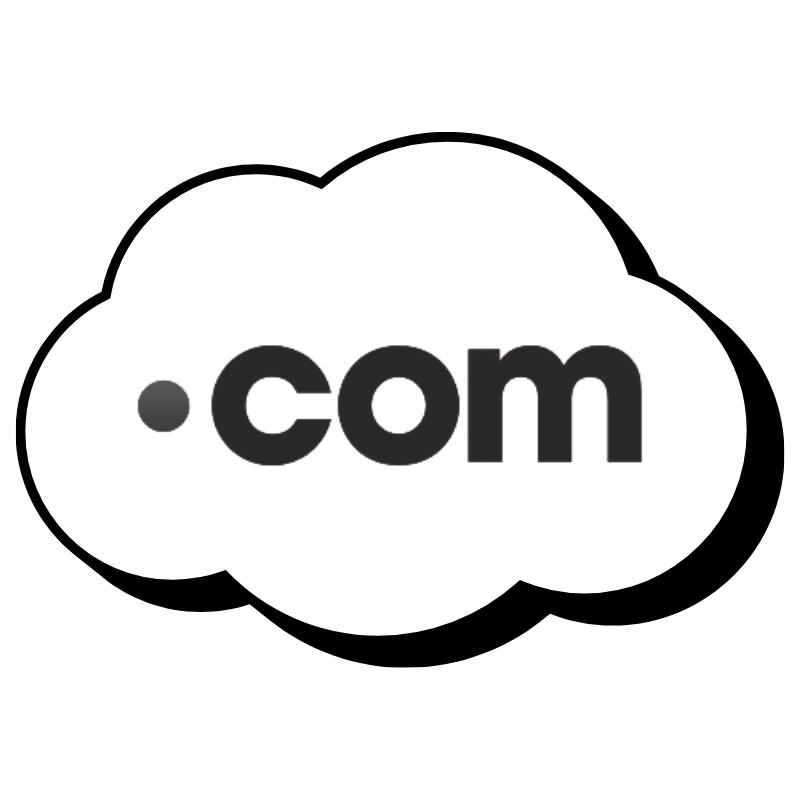 .Com Domain
.Com Domain WhoisLook up domain ownership, expiry dates, and registrar information
WhoisLook up domain ownership, expiry dates, and registrar information VPS Hosting
VPS Hosting Managed VPSNon techy? Opt for fully managed VPS server
Managed VPSNon techy? Opt for fully managed VPS server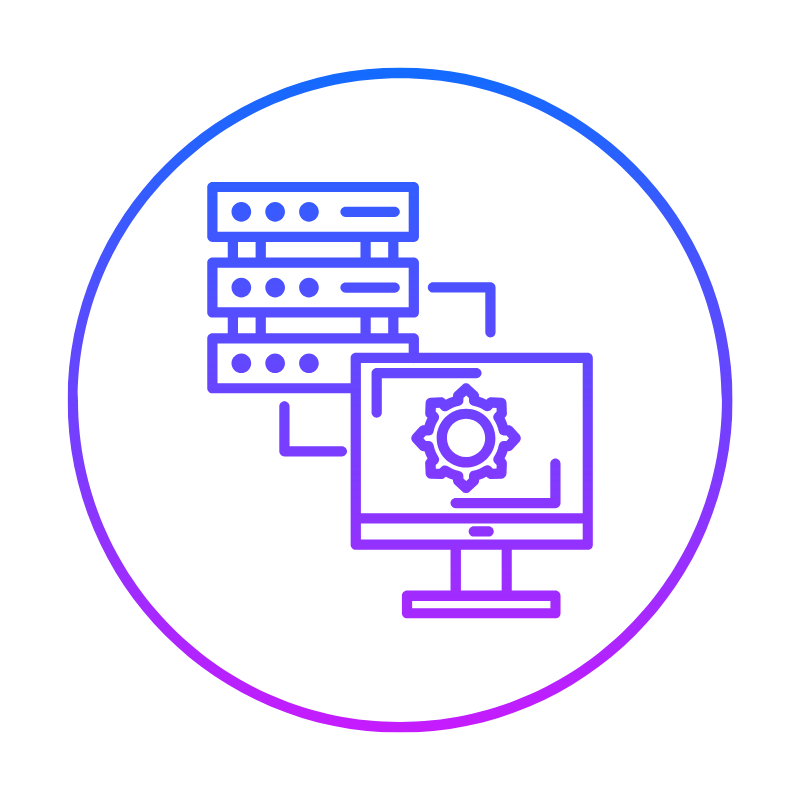 Dedicated ServersEnjoy unmatched power and control with your own physical server.
Dedicated ServersEnjoy unmatched power and control with your own physical server. SupportOur support guides cover everything you need to know about our services
SupportOur support guides cover everything you need to know about our services


